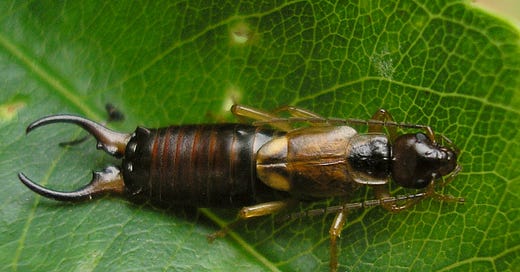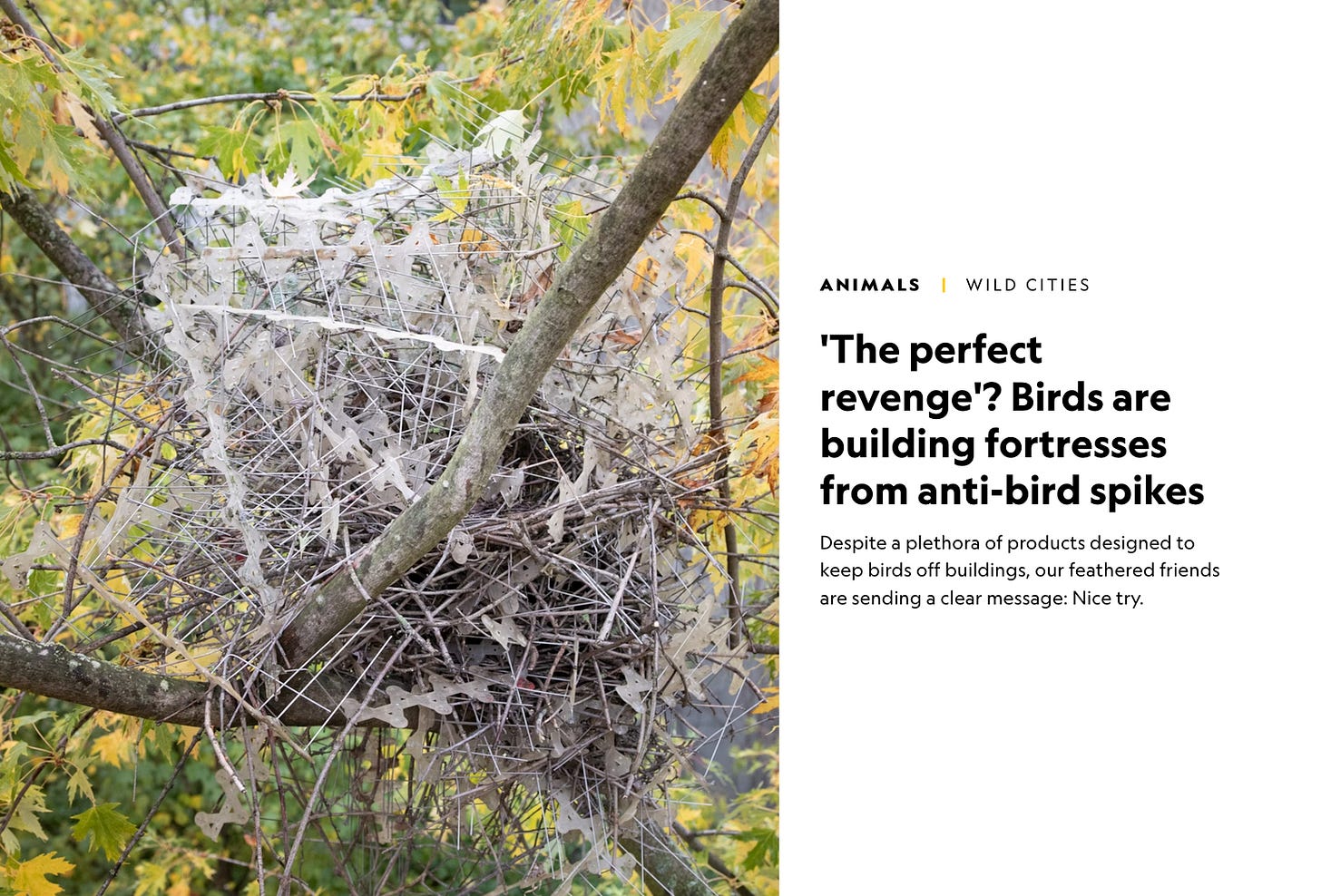It's Raining Earwigs
Scientists drop earwigs out of the sky via drones. Why? Well, you gotta click.
I’ll admit, earwigs don’t tend to be peoples’ favorite insects. Something about that oblong shape and scimitar-like butt-pincers inspires fear and disgust. But did you know that these incredibly common insects lack venom, which means they can’t sting you in any way, and even their little forceps—while technically capable of grasping your finger—are not powerful enough to pinch?
Oh, and that rumor about earwigs crawling into your ear and laying eggs in your brain? Yeah, that’s not even remotely true, as I once wrote about in detail for The Week:
Other surprising things you may not know about earwigs? They can be doting mothers, with the female earwig protecting her eggs and then nymphs after they hatch.
Oh, and did you know the things have wings? I know, you’re going to call bullspit on me for this, because when you look at an earwig there are obviously no wings to be seen. But that’s because the suckers hide them under their vests, all folded up like origami, and when they need them, they just go-go-gadget the flying contraptions up out of nowhere.
Fortunately for all of us, one of my absolute favorite YouTube creators has captured this process in glorious slo-mo. His name is Dr. Adrian Smith, an entomologist at the NC Museum of Natural Sciences, and flying insects in high definition slow-motion are kind of his jam.
It’s a bird. It’s a plane. It’s an… earwig.
Do kids even still get that reference? I have my doubts.
Either way, it’s actually not the fact that earwigs can fly that has me talking about earwigs raining from the sky today. It’s a tweet I saw from entomologist Aldo Hamel in which he declares perhaps the first ever release of earwigs by drone.
Now, this is not some evil villain’s plot take over the world, nor is it designed specifically to freak you out. (Though, credit where it’s due, this would be a very effective prank.) Rather, it’s because earwigs are rather voracious predators of small squishy things. And those small squishy things can sometimes include the aphids that like to eat our apples and the psyllids (aka jumping plant lice) that like to eat our pears.
You can probably see where this is going now. The thought is that if we can boost the numbers of earwigs in an orchard, we can let the predators control all the little creepy crawlies that ruin our fruit and reduce yields without the cost or nastiness of using pesticides. Scientists call this “biocontrol”, but you can think of it like a more practical application of the Old Lady Who Swallowed A Fly’s logic.
In short, the enemy of my enemy is my friend.
Of course, the enemy of my enemy can also be my enemy if it gets into crops it really likes, as earwigs can ravage corn, cherries, grapes, and other tasty treats. So no one is saying earwigs are a one-size-fits-all solution to crop pests. But because earwigs rarely use those fancy wings to move very far, Hamel and his colleagues believe they could have real-world use as miniature guardians of apple and pear orchards. They even marked the drone-dropped ‘wigs in one color and hand-delivered ‘wigs in another color so they can go back and see who’s been more successful.
Anyway, dropping earwigs from drones just sounds like all kinds of fun. Though maybe just in theory—in a response to someone else’s question, Hamel admitted it was no easy task trying to load the earwigs into the drones, because they just kept getting back out as he tried to put other ones in.
But sometimes that’s just how science goes. If you’re not herding cats, you’re herding earwigs.
Need Some More Animal Science Goodness?
Well you’re in luck! I got to write two super fun stories over the past few weeks.
The first is about how magpies are ripping anti-bird spikes off of buildings and using them to build fortresses that protect their chicks against rampaging crows. I mean, how metal is that?
You can read more about it over at National Geographic:
For Story #2, I got to go on a journey into the very distant past, which is fun for me because I don’t tend to do a lot of dinosaur stories. But every so often, you see a study coming out that you just can’t pass up. And hot diggity, this one was a doozy.
So, you know how we tend to think of the earliest mammals as being a bunch of shrew-faced runts, always scurrying around in the shadows of their big fancy dinosuar neighbors? Well, an absolutely bonkers new fossil shows that, at least sometimes, the mammals bit back!







